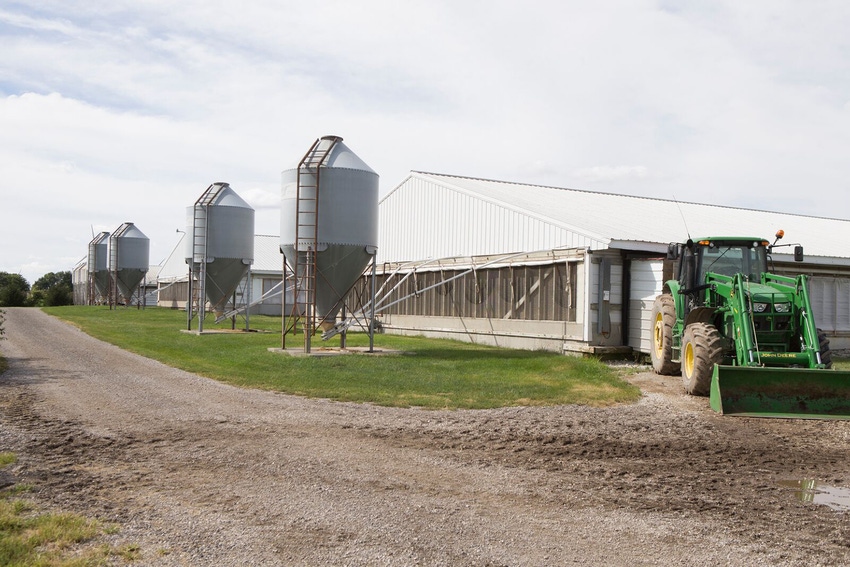Largest stimulus package in U.S. history includes agriculture
Legislative Watch: Another stimulus in spring; more U.S. plants can ship to China; Kenya FTA; Brashears confirmed; National Ag Day.

Congress has approved the $2 trillion coronavirus stimulus package and President Trump has signed the bill.
The stimulus package is designed to help stem the economic decline affecting individuals, companies, industries and small-businesses because of the crisis. The package provides direct financial checks to many Americans, expands unemployment insurance, includes billions of dollars in loans to small and large businesses, and provides major resources to hospitals. This is the largest stimulus package in U.S. history.
Recognizing the difficulties facing farmers and ranchers, the stimulus package gives USDA an additional $14 billion for the Commodity Credit Corporation to provide another round of Market Facilitation Program payments to producers. There is also $9.5 billion to assist livestock, dairy and specialty crop producers. Producers who support local food entities such as farmers markets, schools and restaurants would be eligible for assistance. There is a temporary three-month extension on repayment of commodity marketing assistance loans, from nine months to a year.
A number of Senators requested that cattle producers be eligible for the next round of payments. In a letter to Secretary of Agriculture Sonny Perdue, Senators Jerry Moran (R-KS), John Hoeven (R-ND) and others asked USDA to make a one-time emergency payment to cattle producers.
With the expectation of increased participation in the Supplemental Nutrition Assistance Program, an additional $15.5 billion was added to the program. It also includes $8.8 billion in additional funding for Child Nutrition Programs and $450 million for the Emergency Food Assistance Program.
The administration and Congress plan to consider another stimulus package.
More U.S. pork and beef plants can ship to China
USDA's Food Safety and Inspection Service last weekend listed additional U.S. pork and beef plants that can now export to China under new regulations of the "phase one" trade agreement. FSIS listed 449 pork plants and 492 beef plants.
Dan Halstrom, president and CEO of the U.S. Meat Export Federation said, "With much broader access for U.S. beef, the U.S. industry is well-positioned to expand its presence in the largest and fastest growing beef market in the world. And while unprecedented volumes of U.S. pork have been shipped to China in recent months, the U.S. pork industry has also faced significant barriers that have kept exports below their full potential. The changes announced in the Export Library will benefit pork exporters looking to expand their business in China, as well as producers and everyone in the U.S. supply chain."
Kenya FTA
The administration informed Congress that it intends to begin official trade negotiations with Kenya. The United States Trade Representative must notify Congress 90 days before the U.S. enters into free trade agreement negotiations.
USTR will hold a public hearing on April 28 for the public to testify on the objectives of the trade agreement negotiations with Kenya. Public comments must be sent to USTR by April 15.
Kenya is theUnited States' 98th largest trading partner with $1 billion in two-way trade in 2018. According to USTR the top U.S. exports to Kenya in 2019 were aircraft ($59 million), plastics ($58 million), machinery ($41 million), and cereals (wheat) ($27 million) and the top U.S. imports from Kenya were apparel ($454 million), edible fruit & nuts (mostly nuts) ($55 million), titanium ores and concentrates ($52 million), and coffee ($34 million).
Brashears confirmed
The Senate confirmed Mindy Brashears as USDA's Under Secretary for Food Safety. She had been serving as Deputy Under Secretary for Food Safety.
National Ag Day
President Trump proclaimed March 24 as National Agriculture Day.
Secretary of Agriculture Sonny Perdue said, "Our farmers, ranchers, foresters and producers in America are feeding and clothing the world. Now more than ever it's important that the American people not forget that. Our farmers are resilient, and during these uncertain times they are still working, day in and day out, to produce what's needed for our growing population. Today, on National Ag Day, I challenge the American public to keep our farmers, ranchers and producers on their minds – for all their work to provide us a safe, healthy and abundant food supply. We owe them a debt of gratitude."
Source: P. Scott Shearer, who is solely responsible for the information provided, and wholly owns the information. Informa Business Media and all its subsidiaries are not responsible for any of the content contained in this information asset.
About the Author(s)
You May Also Like



